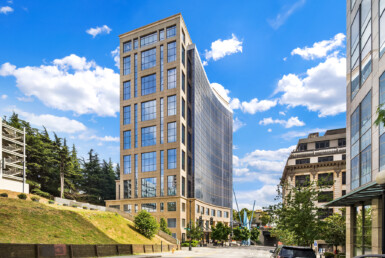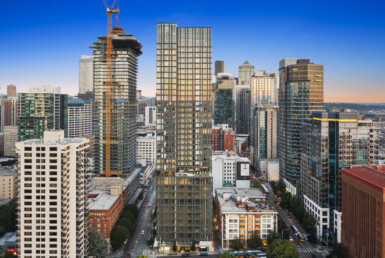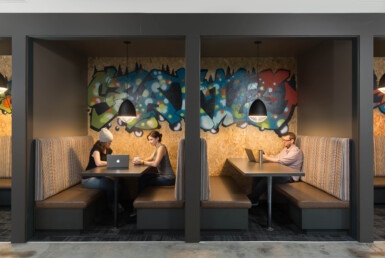Preserving the Façade at 400 Westlake
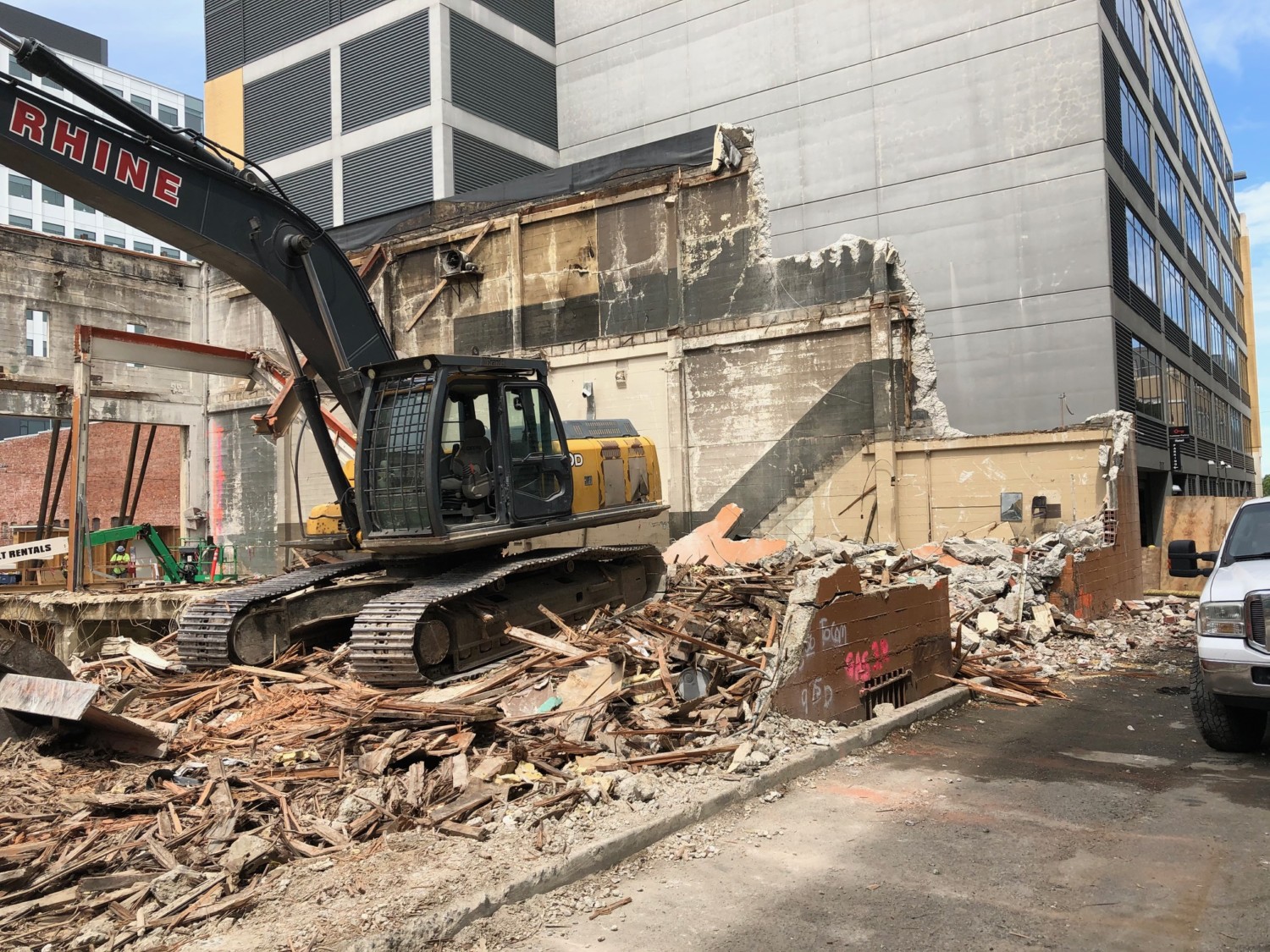
A Construction Feat at the South Lake Union Property with Construction Partners Lease Crutcher Lewis
At Martin Selig Real Estate (MSRE) we are consistently adding to our portfolio of properties to bring reimagined, Class-A office space to Seattle’s most prominent neighborhoods. In Seattle’s tech hub of South Lake Union, 400 Westlake mixes state-of-the-art design with green building to create a redevelopment project like no other.
Redeveloping the Landmark Firestone Tire Building
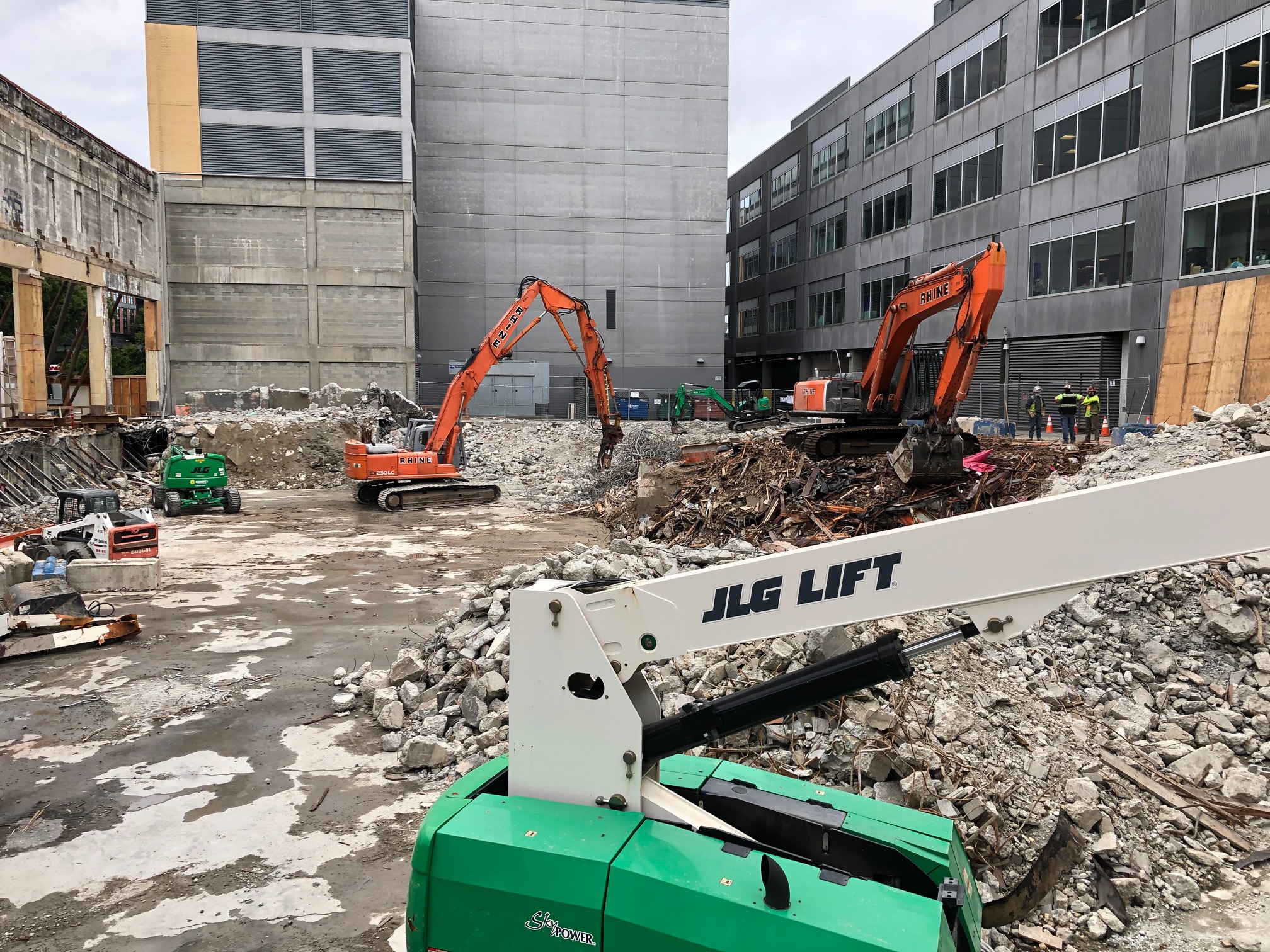
400 Westlake will be a complete redevelopment of the Firestone Tire Building built in traditional Art Deco style. MSRE acquired the building in 2015 with a vision to redesign the building to meet the growing demand for office space as tech companies, primarily those in Silicon Valley, expanded to the Pacific Northwest. Once complete, the building will feature a modern and sustainable 13-story tower atop the 1929 landmark.
The construction process to change the pre-existing structure into one of the greenest office buildings of its size in the world is not easy, but MSRE takes the challenge head-on with longtime construction partners Lease Crutcher Lewis (LCL).
Like other MSRE developments, government regulations mandate preservation of landmark characteristics. At 400 Westlake, this means preserving the terracotta façade first built nearly a century ago.
What is Terracotta? And What Makes it Special?
As LCL notes in a recent blog post, from the street, the terracotta façade at 400 Westlake looks relatively simple. However, the behind-the-scenes engineering needed to preserve it will be a construction feat.
Terracotta is a clay and water mixture primarily used in pottery and architecture. Terracotta’s ascend into popular architecture began in the early 20th century, gaining real recognition around the 1930’s.
Translated from Latin as “baked earth,” terracotta is most recognizable by its deep brownish red color. However, don’t let this fool you, as it is often glazed to other, lighter colors. Glazed terracotta is preferred for its strength and durability and is one of the most prevalent masonry building materials found in the urban environment today.
What does it look like in the skyline?
You can find examples of terracotta architecture at the Woolworth Building (1913) in New York City and the Wrigley Building (1921) in Chicago.
In Seattle, a well-known terracotta structure named the Smith Tower was the city’s tallest skyscraper until 1962, after which it was surpassed by another recognizable landmark built for the Seattle World’s Fair.
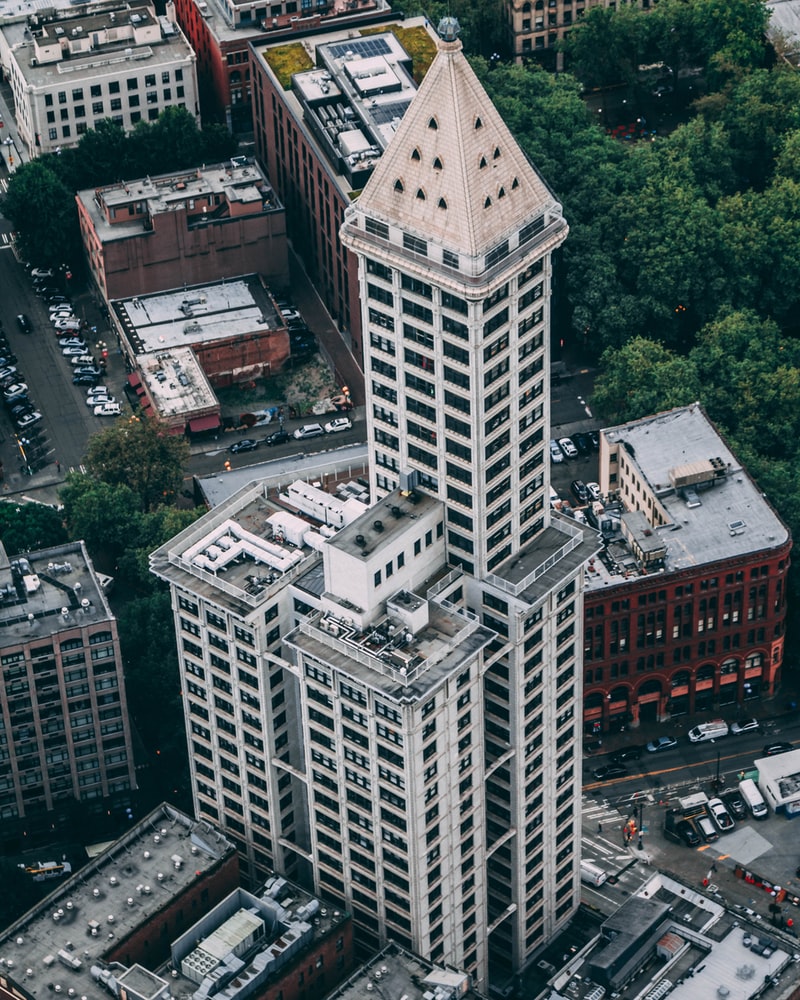
Preserving terracotta requires expertise. Water, stress, inadequate repairs and other factors erode terracotta from the inside out, and deterioration is not always seen externally. Repairs and replacements require the attention of a structural engineer, who can mitigate damage to the various joints and examine the external glaze, mortar or porous body of the façade.
In addition to difficult engineering, the terracotta replacements must also be designed in a similar manner to the original. To assist our construction engineers at LCL, MSRE also relies on the architectural design of our partners at Perkins + Will to preserve the building’s century-old identity.
Using Virtual Technology to Preserve the Facade
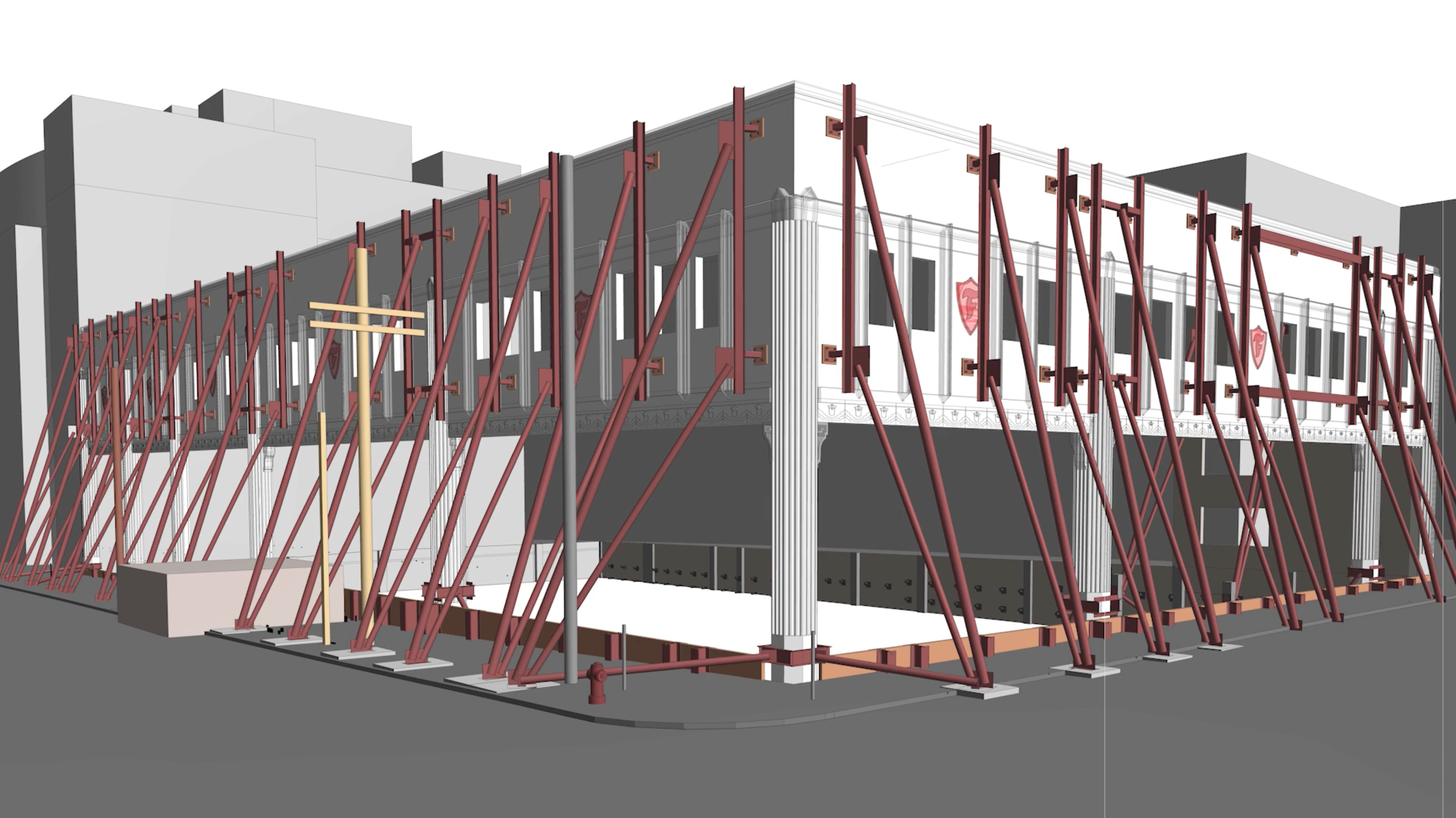
So, how will we do it? Preservation of 400 Westlake requires a triangular series of braces to completely support the upper and lower façade, without causing too much stress, which could break the stone. These braces must remain in place until the new structure is finalized.
To add to the challenge, the nearly 100-year-old building is beginning to shift and lean. “Fortunately, [the] Virtual Design and Construction (VDC) and Lewis Survey teams had an idea,” said Jacob Boyd, VDC Coordinator at Lease Crutcher Lewis. “If they could supply exact measurements, the steel fabricator could custom-fabricate each brace for its specific location. The project team could then focus on securing the façade, instead of modifying the braces.”
“The result? The beams arrived on a truck, were lifted into place and welded on…no modification necessary,” said Boyd. “Thanks to proper planning, the team saved over five weeks on the project.”
Despite a pause on construction due to the current public health crisis, the engineering marvel of LCL is keeping our project at 400 Westlake on track to open in 2021
Designing the Past for the Future
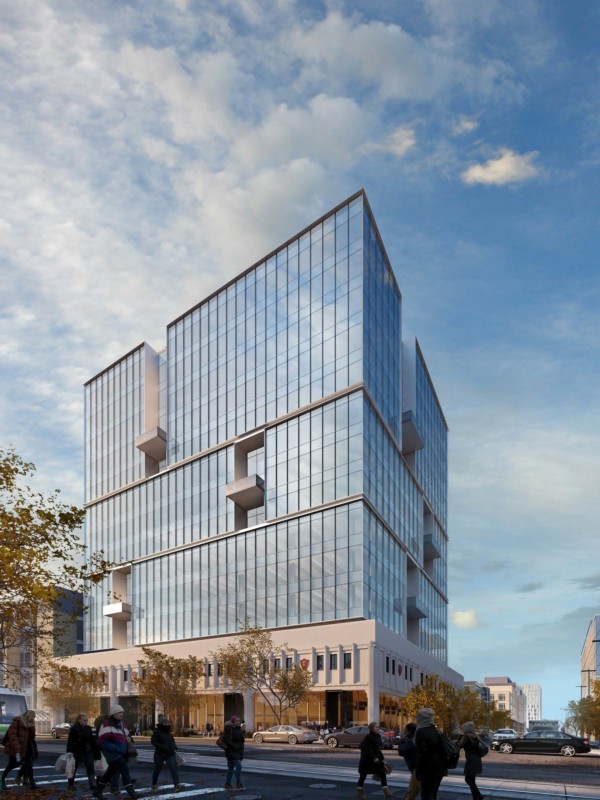
Some might say preserving a landmark is not as lucrative as building from scratch. In addition to building for the present and future, the design and construction has to take the building’s historic past into account.
Thankfully, our design partners at Perkins + Will designed 400 Westlake to be a green, state of the art 21st century icon sitting atop a landmark built nearly 100 years before it.
Like Mr. Selig himself, who’s personal and professional experiences have been defined by overcoming obstacles, 400 Westlake’s character and history add to the uniqueness and longevity of its story.
To learn more about how Lease Crutcher Lewis is helping us preserve the Firestone Tire Building, check out their blog here.
To inquire about pre-leasing commercial office space or retail space from 400 Westlake, contact one of our leasing specialists today.


